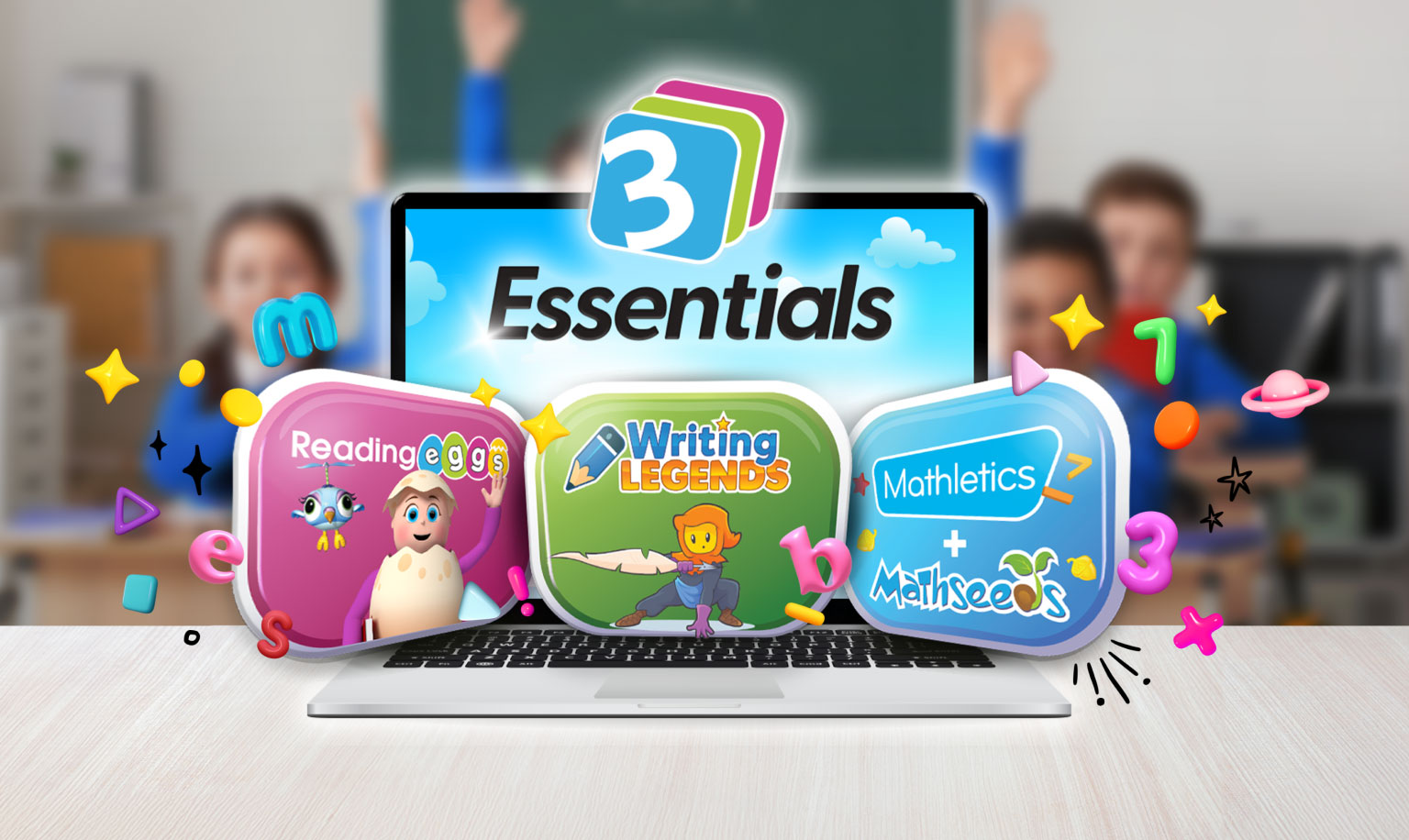
Mathematical success begins long before students encounter their first multiplication table. It begins in the earliest years, when we have an extraordinary opportunity to shape young minds.
While literacy programs have long captured headlines and funding, we’re now discovering the tremendous potential that lies in early mathematical learning.
In recent years, several states have begun expanding early learning legislation to embrace not only reading but also numeracy, recognizing that foundational math skills are equally powerful predictors of lifelong academic success.
In many classrooms today, we have an incredible chance to transform how we approach math instruction in the early years.
Rather than limiting our approach to rote counting or basic symbol recognition, we can unlock children’s natural mathematical thinking from the very beginning.
Research reveals that ages 5 to 8 represent a golden window of opportunity, when children are naturally developing number sense, discovering patterns and building the cognitive skills – like working memory and flexible thinking – that become the foundation for all future mathematical learning.
The belief that ‘meaningful math learning starts around the fourth year of school’ overlooks the remarkable potential of young learners. While math content may appear more complex in later grades, the cognitive and conceptual foundations for mathematical thinking can be cultivated much earlier, particularly in PreK through 2nd Grade.
Make the most of this critical window and you’re building mathematical minds that will thrive.
With everything we know from research, school leaders now face a clear pathway forward: embrace what science tells us about early numeracy and invest where we can achieve maximum impact for every child.

Counting on the future: Why we have to get early numeracy right
As touched on above, major longitudinal studies consistently identify early numeracy skills as the most reliable predictor of future academic achievement – evidence that reveals incredible possibilities for young learners. And the reasons extend far beyond mechanical counting and computation.
From ages 3 to 5, children are in an optimal window of brain development, when core executive function skills like working memory and cognitive flexibility are developing rapidly. These skills are the ‘how’ of learning, empowering students to follow steps, switch strategies and maintain focus while solving problems. In fact, they’re the very mental tools that mathematical thinking builds upon.
By age 7, the brain networks that support these processes are already starting to resemble those of adults, making the first three years of formal education a prime opportunity for meaningful support.
It’s during this time that key foundations like number sense, spatial reasoning and problem-solving are established and strengthened.
Recognizing this optimal learning window, several state departments of education are now prioritizing early numeracy within their ESSA-aligned intervention frameworks – creating valuable opportunities for schools to access funding and implement evidence-based supports at the stage when impact is greatest.
The equity potential is equally inspiring. While math achievement differences by income, race and geography can appear at the very beginning of education, early targeted support offers tremendous promise for creating more equitable outcomes.
When we invest in developing strong number sense and problem-solving strategies from the start, we help ensure all children build the mathematical confidence they need to access advanced STEM opportunities later.
Since these foundational skills develop naturally in the early years, every day we invest in quality early numeracy instruction is a day we strengthen mathematical thinking and open doors for all learners.
The foundation for success: How strong early math skills are built
When we invest in strong early math foundations, the benefits become clear around age 8–9, just as curriculum demands expand in 3rd Grade. University of Oregon researcher Ben Clarke’s findings illuminate a powerful opportunity:
For kids that have a fundamental weakness in mathematics, 80 percent or 90 percent of the time that’s going to be linked to a lack of understanding numbers.
With robust number sense, students navigate mathematical challenges with confidence and flexibility.
The key often lies in strengthening working memory – helping children hold one part of a problem in mind while manipulating another, making multi-step reasoning achievable and rewarding.
These strengths prove particularly valuable for applied problem-solving, where students develop the flexibility to interpret novel situations and go beyond memorized procedures.
In states prioritizing comprehensive literacy support, foundational numeracy skills are now recognized as powerful allies for academic success, as strong readers often demonstrate parallel strengths in applied problem solving and quantitative reasoning.
With the right support, mathematical thinking flourishes exponentially.
Students with strong symbolic number sense develop the mental agility to adapt when problems are presented in different ways.
The earlier we build these foundations, the more dramatic and lasting the impact becomes – meaning we’re working within the optimal window for developing executive function skills.
Targeted support that focuses on strategic thinking and efficient techniques – such as counting on from known cardinal values – creates remarkable progress for students from all backgrounds, especially when paired with early screening for conditions like dyscalculia and personalized learning approaches.

The exciting shift: From rote counting to flexible thinking
In the early education years, there’s a wonderful opportunity to move beyond counting aloud or identifying digits to build real mathematical understanding.
As mentioned above, true fluency celebrates number sense – a sophisticated understanding of numerical relationships and the ability to connect counting, number knowledge and basic operations in meaningful ways. And it matters more than we give it credit for.
Studies show that a child’s number sense in 1st Grade can predict their math achievement years later – not just in calculations, but in the kinds of real-world problem solving. In fact, number sense contributes an impressive additional 12% to overall math achievement and up to 17% in applied problem solving by 3rd Grade.
The lasting impact of number sense is hard to overstate.
In fact, this advantage grows stronger as mathematics becomes more complex. Think of it as the mathematical equivalent of phonemic awareness in reading: without it, students may appear proficient in early years but inevitably struggle with fractions, place value and reasoning tasks that demand flexible thinking rather than mechanical recall.
The solution lies in creating rich and highly engaging mathematical environments where students explore numbers through multiple representations.
It’s familiar contexts like playgrounds, kitchens and shopping scenarios that encourage strategy explanation and conceptual understanding.
Supplemental programs like Mathseeds harness this potential by embedding number sense into real-world contexts through gamified, developmentally appropriate activities.
Strategic leadership moves for strengthening early mathematics
Given this golden opportunity, where can educational leaders make the greatest impact in strengthening foundational mathematics skills?
Start by investing in high-quality curriculum that build conceptual understanding and number sense rather than relying on procedural memorization.
Provide targeted professional development in evidence-based early math strategies – this is essential when only 15% of teacher preparation programs adequately cover mathematics content and pedagogy.
As a result, many US elementary teachers report low confidence in teaching foundational math, often feeling underprepared to build number sense in the earliest grades.
Next step: examine your classroom environments critically. As Nancy Jordan from the University of Delaware notes:
Often, I’ll go into classrooms with literacy stuff all over the walls, but nothing in terms of numbers.
Elementary spaces need to become numerically rich, featuring number lines, mathematical games and playful opportunities that weave number sense explicitly into concrete skills.
Implement universal screeners like the Number Sense Brief (NSB) to identify at-risk students early, before small gaps become significant barriers. Aligning your early math strategy to ESSA tiers of evidence or MTSS frameworks can further strengthen intervention efforts and support funding eligibility.
Lastly, help teachers understand mathematics as a developmental progression – from counting through fractions and beyond – rather than isolated grade-level standards.
The foundation for mathematical success starts now: Download your free guide
For the complete roadmap to building strong foundations in the early years, download our free guide, ‘Early Numeracy as a Cornerstone of Long-Term Academic Success‘, an evidence-based resource for educators committed to closing learning gaps and building stronger math foundations for every student.





